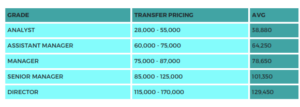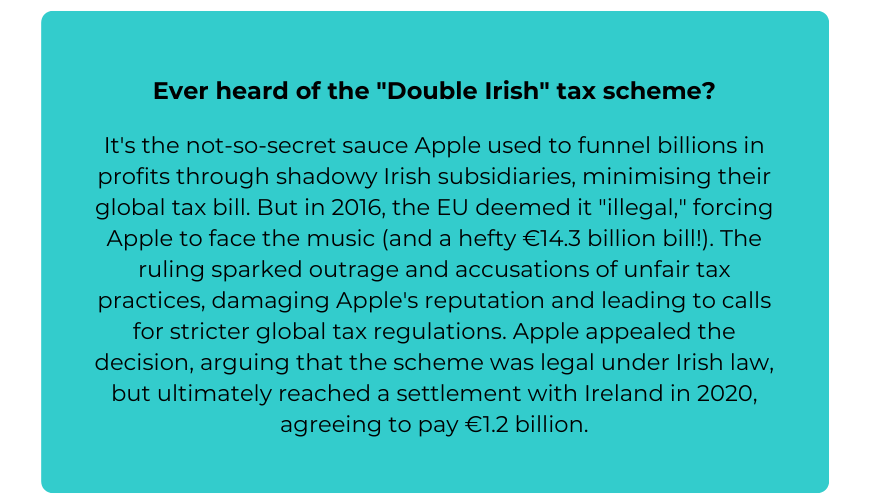Harvey John
Unit 2 Ferry Wharf
Hove Enterprise Centre
Basin Road North
Portslade, East Sussex
BN41 1BD
In the global commerce space, a term frequently discussed among boardrooms and finance departments is “transfer pricing” (TP). Don’t be fooled by its seemingly mundane facade—this isn’t your run-of-the-mill corporate finance jargon. It’s the intricate art of profit allocation, a strategic ballet of numbers and tactics performed by multinational giants. Dive beneath the surface, and you’ll discover a fascinating world where every penny counts and every decision reverberates across borders.
Welcome to the world of transfer pricing – where numbers meet strategy, and the global economy hangs in the balance.
What is transfer pricing?
In a nutshell, transfer pricing is about determining prices for goods, services, or intellectual property exchanged between different divisions of a multinational corporation, operating in different countries. It’s comparable to determining how much one branch of a store chain should pay another branch for supplies or services. However, it’s compounded by the intricacies of diverse tax regulations across nations.
The overarching aim is fairness: each division of the corporation should receive its rightful share of profits, while preventing any manipulation to funnel profits into jurisdictions with lower tax rates. Think of it as establishing a set of rules for equitable conduct within a large, international corporation.
Over four decades ago, the Organization for Economic Co-operation and Development (OECD) introduced the arm’s length principle, providing a framework for multinational corporations and tax authorities to address transfer pricing challenges.
The arm’s length principle guidelines have evolved over time to adapt to new transfer pricing challenges. In essence, the core rule remains unchanged: transactions within a company should occur at prices similar to those of comparable transactions between independent businesses.
Illustrating with Examples
Imagine two independent entities: Farmer Fred (Company A) and Grocery Gal (Company B). Fred cultivates high-quality apples and sells them to Gal at a mutually agreed-upon fair price – an uncontrolled transaction, adhering to the arm’s length standard.
Now, envision siblings Apple Acres (Company X) and Orchard Emporium (Company Y), both under the ownership of Big Basket (Company Z). When Orchard Emporium purchases apples from Apple Acres, it becomes a controlled transaction. The challenge lies in establishing a fair price that doesn’t favour one sibling over the other. Here, the arm’s length principle ensures equitable pricing, akin to the arrangement between Farmer Fred and Grocery Gal.
If Apple Acres and Orchard Emporium arrive at the same price as Farmer Fred and Grocery Gal, even their controlled transaction is considered arm’s length. This fosters satisfaction among all involved parties and aligns with the expectations of tax authorities.
But transfer pricing isn’t as simple as it sounds…
Setting transfer prices isn’t a straightforward task; it requires delicately balancing compliance with optimisation. Overestimating prices may attract undue attention from tax authorities and increase tax liabilities. Conversely, underestimating prices may raise suspicions of profit-shifting. Inaccurate transfer pricing can carry significant consequences for multinational corporations, ranging from financial penalties to reputational damage. Take the “Double Irish” tax scheme that Apple utilised in 2016, for example.
Why you should consider a career in in transfer pricing:
Transfer pricing serves as the invisible hand maintaining equilibrium in the financial universe of multinational corporations. It’s not merely a matter of number-crunching but a strategic maneuver on the grand chessboard of global commerce.
And you have the opportunity to be the grandmaster.
Driven by factors such as globalisation, digitalisation, and increased scrutiny from tax bodies, the transfer pricing landscape is evolving at a rapid pace and there’s a surge in demand for more expertise. The increased demand for TP specialists has placed an emphasis on seeking out those with the following skills:
- Technical expertise: Companies are seeking professionals with in-depth knowledge of transfer pricing regulations, international tax treaties, and economic methodologies.
- Industry specialisation: Expertise in specific industries like pharmaceuticals, technology, or financial services is increasingly sought after.
- Data analytics: Skills in data analysis and visualisation are becoming crucial for handling complex datasets and identifying transfer pricing risks.
- Technology focus: Companies are adopting technology solutions to automate routine tasks, improve data analysis, and enhance compliance processes.This creates demand for professionals with skills in using and implementing transfer pricing software tools.
If you’re curious about a career in transfer pricing, here’s a snippet of average salaries in the UK:

*For more on market salaries check out our Direct Tax Salary Guide
And if you want some personalised career advice in the direct tax space, reach out to Ewa Milner-Walker and follow her market updates here.
Author

Prior to joining the recruitment industry, Ewa had a career in real estate in New York City & London. She prides herself on working closely with clients and candidates to help them to find the best match for their requirements and career objectives.
Ewa is happy to converse in English, German, Italian as well as her native Polish.


